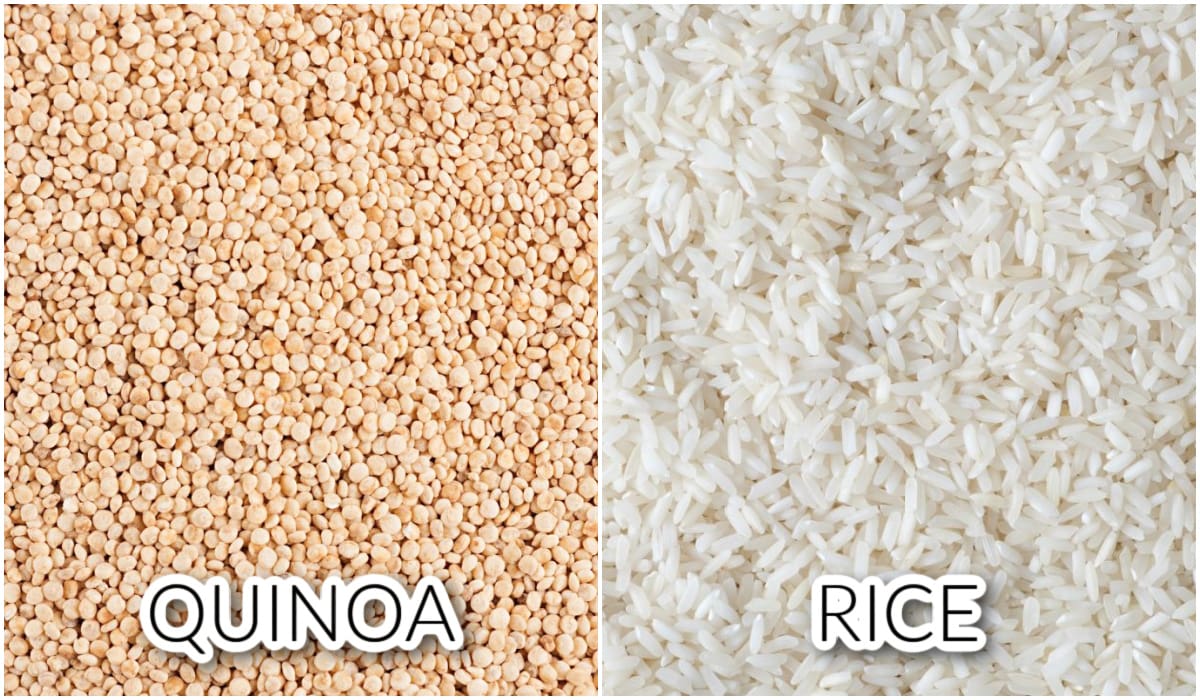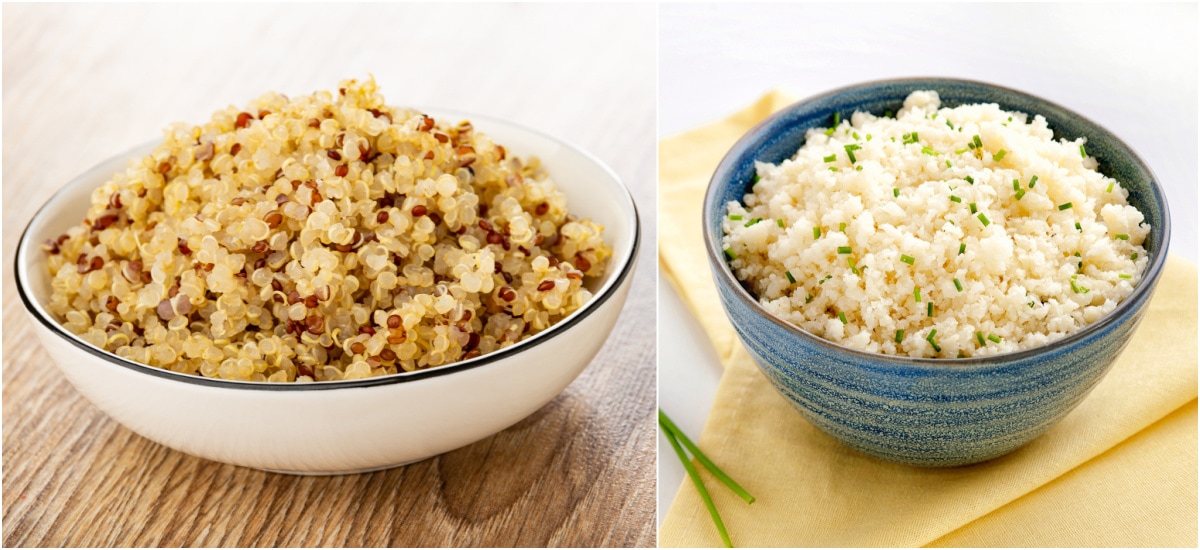Quinoa and rice are both popular grains that are often eaten as part of a healthy diet. But which one is healthier for you? You can compare the pros and cons of quinoa vs. rice to make an informed decision.

Quinoa Vs. Rice
Quinoa is a grain crop that is grown for its edible seeds. It is classified as a pseudocereal, meaning that it is not a true cereal grain like wheat or rice, but it shares many of the same characteristics. Quinoa is high in protein and fiber and is considered a superfood due to its nutrient-rich composition.
But rice is a true cereal grain that is composed of carbohydrates and a small amount of protein. It is a staple food in many cultures and has been consumed for thousands of years.
While quinoa and rice have some similarities, there are also several notable differences between them:
- Cooking method
One difference between quinoa and rice is their cooking methods. Quinoa can be cooked like a grain and used in recipes like salads or pilafs. It can also be popped like popcorn or ground into flour. Visit this blog post, How to Cook Quinoa, for directions on cooking the perfect quinoa. Rice is usually boiled, steamed, or fried before being eaten.
- Texture
Quinoa and rice have different textures when cooked. Quinoa has a light, fluffy texture that is similar to couscous or pasta. Rice has a much firmer texture and is more like a grain. This difference in texture can make quinoa a better choice for some dishes, such as salads, while rice might be better suited for others, such as stir-fries.
Quinoa Vs. Rice Nutrition

One of the biggest differences between quinoa and rice is their nutrient content. Quinoa is much higher in protein than rice as well as several other important nutrients like fiber and iron. It is also a good source of antioxidants and has a lower glycemic index than rice, meaning that it won't cause spikes in blood sugar levels as much.
Rice is a rich source of carbohydrates and doesn't have the same nutrient-rich profile as quinoa. According to the USDA, one cup of cooked quinoa and brown rice have the following nutrition:
- Calories
Quinoa and brown rice have about the same number of calories: 222 calories in quinoa and 218 calories in brown rice.
- Protein
Quinoa has more protein than brown rice: 8 grams in quinoa and 5 grams in brown rice.
- Carbs
Quinoa has fewer carbs than brown rice: 39 grams in quinoa and 46 grams in brown rice.
- Fiber
Quinoa has more fiber than brown rice: 5 grams in quinoa and 3.5 grams in brown rice.
- Other nutrients
Quinoa is higher in iron, magnesium, and folate than brown rice.
Is Quinoa Healthier Than Rice?
Based on the nutrition facts above, quinoa may be healthier than rice. Because it is a seed, quinoa has more protein, fiber, and nutrients than brown rice.
But rice, especially brown rice, is also a healthy food. It is low in calories and fat and high in fiber, vitamins, minerals, and antioxidants. You can enjoy both of these healthy foods.
Delicious Quinoa Recipes to Try
- Cilantro Lime Quinoa
- Healthy Three Bean Quinoa Salad
- Honey Almond Quinoa Granola
- Quinoa Peanut Butter Cup Protein Balls
Quinoa Vs. Rice FAQs
Yes, quinoa is a healthy substitute for rice. It is higher in protein, fiber, and nutrients than rice.
There are three different kinds of quinoa: black, red, and white. Black quinoa is the rarest kind and has a stronger but sweeter taste than the other two kinds. Red quinoa has a nuttier flavor. White quinoa is the most mild-tasting quinoa. They all have the same amount of nutrition, so choose the kind that tastes the best to you.
Quinoa does not taste a lot like rice. While they are both grain-like foods, quinoa has an earthy, nutty flavor that is unique to itself. Rice has a more bland taste that can be enhanced with various spices or sauces.
Bottom Line
Quinoa and rice are both healthy, nutritious foods that can be a part of a balanced diet. But they have different nutrient profiles and cooking methods, so it's important to choose the right one for your needs.
If you're looking for a higher-protein grain, quinoa is a great choice. If you're looking for a grain with a more traditional texture and flavor, rice might be a better option.


